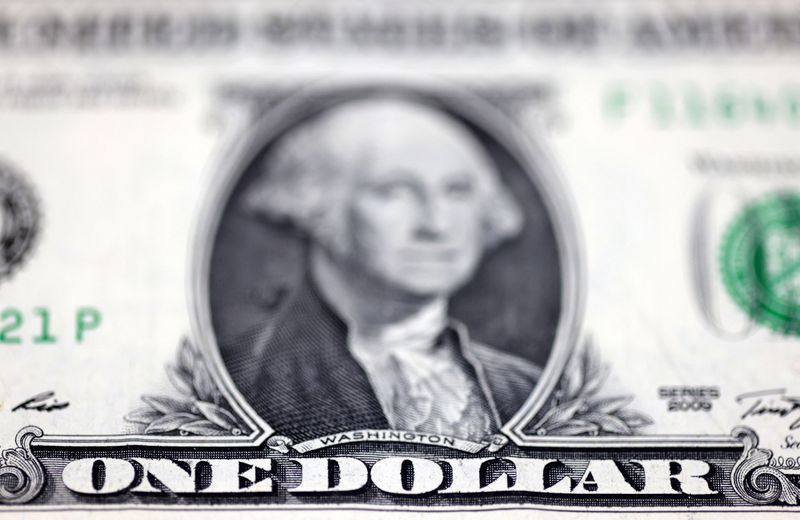Forex
Dollar hits four-week high ahead of US inflation report

By Karen Brettell
NEW YORK (Reuters) -The dollar hit a four-week high on Tuesday, ahead of a highly anticipated inflation report that is likely to influence the timing of the first rate cut by the U.S. Federal Reserve, while the euro was pressured by political uncertainty in the European Union.
Stronger-than-expected jobs gains and higher wage inflation in Friday’s U.S. jobs report for May raised concerns that inflation may remain sticky while growth stays strong, making the U.S. central bank less likely to cut rates in the coming months.
Traders have pared back expectations of the first U.S. rate cut in September, which now has roughly 50-50 odds.
The U.S. Labor Department is due to release its consumer price index (CPI) for May at 8:30 a.m. EDT (1830 GMT) on Wednesday, just hours before the Fed concludes its latest two-day policy meeting.
“I do think the Fed members will take that (CPI data) into consideration,” said Noel Dixon, senior macro strategist at State Street (NYSE:) Global Markets.
The U.S. central bank is expected to leave interest rates unchanged, but Fed policymakers will update economic projections widely known as the “dot plot.”
If inflation remains in line with expectations, Dixon expects the dots to show an expectation of two 25-basis-point rate cuts this year, down from the median projection of three cuts as of March.
“You could get some short-term weakness in the dollar, especially given the big move we’ve had in euro/dollar,” Dixon said.
However, “once the dust settles, I think we’ll get back to the relative monetary policy divergence story and … that’ll continue to be supportive for the dollar going into the rest of the year.”
Economists polled by Reuters expect headline consumer price inflation to ease to 0.1% from 0.3% last month, and core price pressures to remain steady at 0.3% from last month.
The was last up 0.1% at 105.24 but rose as high as 105.46, its strongest level since May 14. The euro fell 0.2% to $1.0742 and earlier reached $1.07195, its lowest level since May 2.
The single currency has also fallen on concerns that gains by eurosceptics in European elections and the calling of a snap French election could complicate the EU’s attempts to deepen integration.
Marine Le Pen’s National Rally was forecast on Monday to win the coming French election but fall short of an absolute majority.
Meanwhile, the Bank of Japan will conclude its two-day meeting on Friday, which economists expect to result in the central bank starting to taper its monthly bond purchases.
The dollar was little changed on the day against the Japanese currency at 157.03 yen.

The yen’s plunge to a 34-year low of 160.245 per dollar at the end of April sparked several rounds of official Japanese intervention to the tune of 9.79 trillion yen.
In cryptocurrencies, bitcoin fell 3.53% to $67,200.27.

 Forex3 years ago
Forex3 years agoForex Today: the dollar is gaining strength amid gloomy sentiment at the start of the Fed’s week

 Forex3 years ago
Forex3 years agoUnbiased review of Pocket Option broker

 Forex3 years ago
Forex3 years agoDollar to pound sterling exchange rate today: Pound plummeted to its lowest since 1985

 Forex3 years ago
Forex3 years agoHow is the Australian dollar doing today?

 Cryptocurrency3 years ago
Cryptocurrency3 years agoWhat happened in the crypto market – current events today

 World3 years ago
World3 years agoWhy are modern video games an art form?

 Commodities3 years ago
Commodities3 years agoCopper continues to fall in price on expectations of lower demand in China

 Economy3 years ago
Economy3 years agoCrude oil tankers double in price due to EU anti-Russian sanctions


























